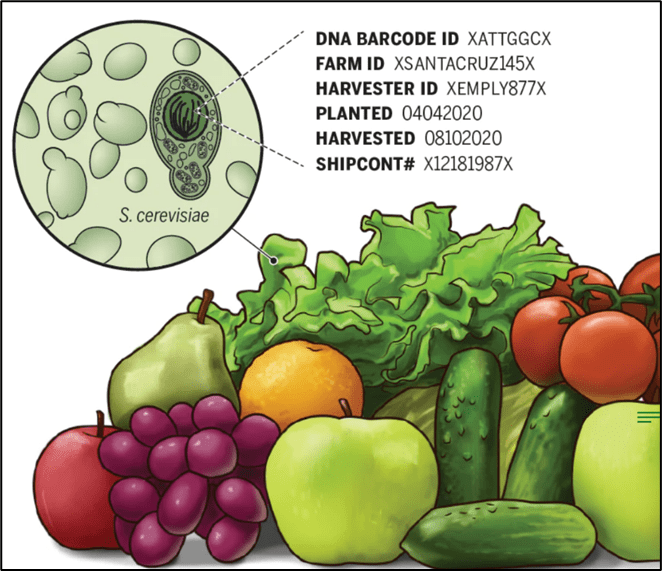The technology is called the barcoded microbial spores (BMS) system, which uses the bacterium Bacillus subtilis and the yeast Saccharomyces cerevisiae.
Microbes can be found everywhere in our environment, although different microbial populations may develop in different geographical locations. However, these environmental microbes are too easily prone to mixing or changing over time to be useful as a tracker.
However, these genetically engineered microbes are resistant to environmental stresses and can survive for long periods of time. The secret to their improved resistance is that the microbes are in spore form, so they can persist in harsh environmental conditions without growth.
To ensure the unique trackability of these microbes the researchers designed a dozen unique DNA sequences to inject into the genomes of the bacterium Bacillus subtilis and the yeast Saccharomyces cerevisiae. This unique DNA sequence became these microbes' barcodes. Through mixing and matching how these codes were injected, the researchers were able to design a nearly infinite number of unique barcodes. To identify the barcodes, a sample is collected from the surface of the object, which can then be prepared and analysed using various decoding tools, such as DNA sequencers or quantitative PCR.

The researchers carried out simulations on a range of natural environments and surfaces (e.g. sand, soil, wood, carpet, grass) to see how long the modified microbes remain traceable. The team found that even in dynamic environments (like simulated windstorms, sweeping, and evening boiling and microwaving) the microbes could still be identified and decoded in less than an hour even after being left on the surfaces for up to five months.
The technology could be used to trace food production all the way from the farm to the plate or to trace the spread of food-borne illnesses. It can also be used for law enforcement purposes (tracking the movements of individuals, e.g. when crossing borders, as it can be identified on shoes after walking for 4 hours), but unauthorised or uncontrolled use of the technology can lead to misuse and is a cause for concern.
The release of genetically modified organisms into uncontrolled environments may come with risks. Both Bacillus subtilis and Saccharomyces cerevisiae are commonly found in the environment and in food samples, and products derived from them have already been granted “generally recognized as safe” (GRAS) status by the U.S. Food and Drug Administration. To prevent their proliferation in native environments, the researchers used auxotrophic B. subtilis and S. cerevisiae strains that require supplementation of key amino acids for growth. The researchers took additional steps to prevent the microbial spores from returning to an active cellular state by either removing genes essential to this process (B. subtilis) or by boiling the spores to permanently heat-inactivate them (S. cerevisiae).
Before the technology can be applied in practice, it should be carefully examined whether the use of genetically engineered microbes may raise additional eventualities and risks of concern.

